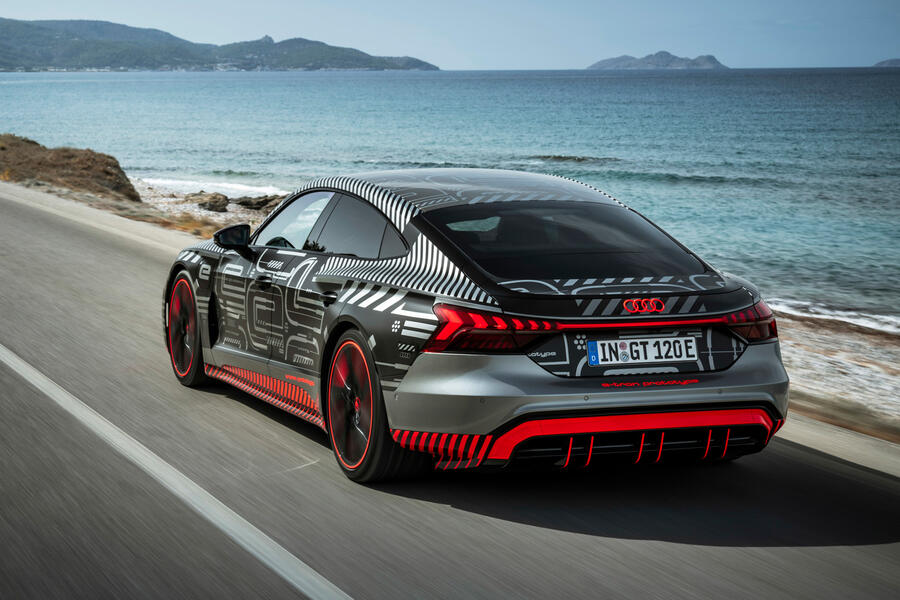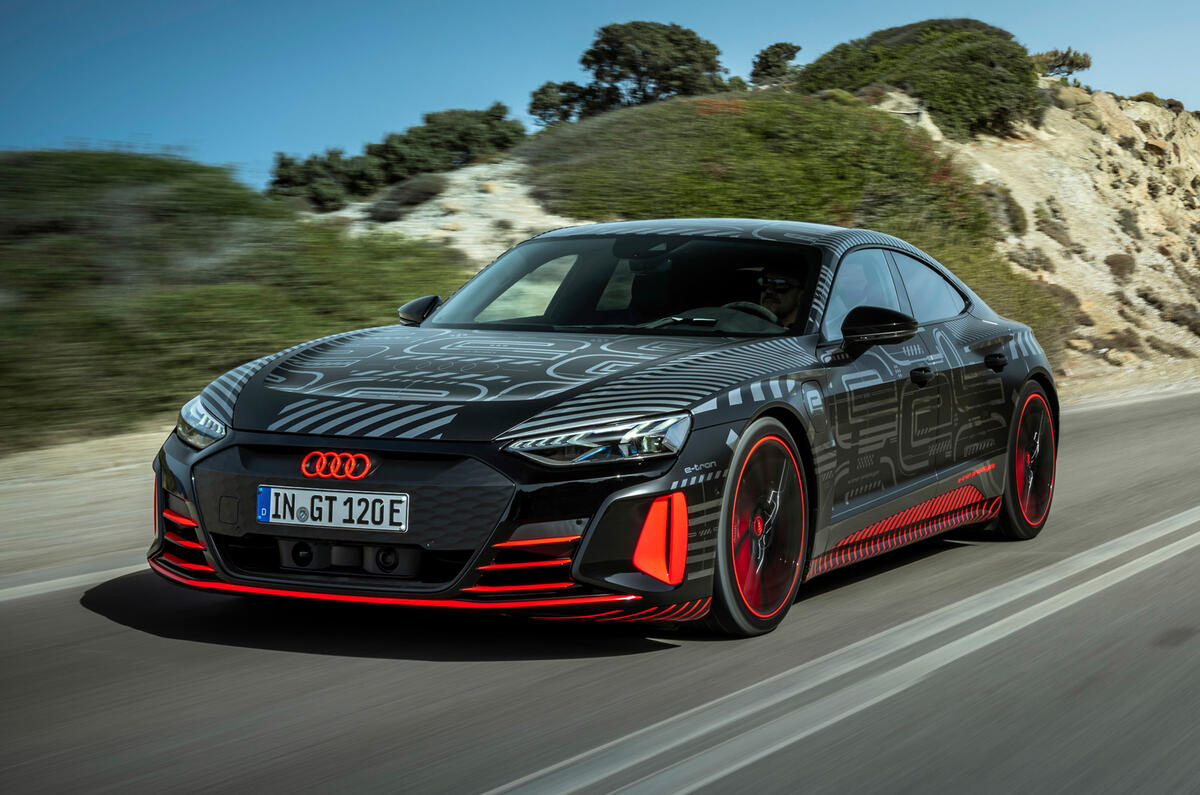What is it?
The Audi RS E-tron GT raises a few interesting questions relating not only to the future of the performance car as a concept, but also to all cars in a far broader sense.
It’s no secret that the first electric vehicle to wear Audi Sport’s coveted RS badge shares in effect all of its componentry with the Porsche Taycan. From its twin electric motors to its three-chamber air suspension, and from its 800V battery to its layout and the J1 platform upon which it’s based – all of the things that make these cars stop and go and ride and change direction – are pretty much one and the same. So it’s tempting, if a little reductive, simply to label the RS E-tron GT as a Taycan in an Audi frock, purely by dint of the fact that the Porsche came first.
So the first of those questions, I guess, should be, ‘how much truth is there in such a label?’. And the big, rather more philosophical one has to be, ‘how different from one another can we expect the electric performance cars of the future to actually be?’.
We’ll come to the first in a bit, but that second one is a bit of a humdinger. Combustion-engined performance cars have taken many forms over the years, and everything from cylinder count to engine positioning, forced induction and transmission type all combine to determine how a car will ride, handle, perform and respond to your inputs. Crucially, however, they all help to form a car’s unique sense of personality.
There’s a degree more uniformity where the high-performance EV is concerned. Most will house their batteries beneath the floor, between the axles for a low centre of gravity and better weight distribution. Most will have an electric motor up front, joined by one or two motors at the rear for all-wheel drive. All will offer immediate throttle response and a slug of torque available from the basement and which enables them to accelerate with all the ferocity of a jump into hyperspace. Great for making the Kessel Run in less than 12 parsecs, perhaps, but it’s all a bit samey, isn’t it?
Just like the Taycan, the Audi fits that blueprint to a tee. Its 83.7kWh (net capacity) battery sits between the front and rear axles, each of which houses a permanent-magnet synchronous electric motor.
Combined, they endow the RS E-tron GT with system outputs of 612lb ft and 590bhp – that latter figure rising to 646bhp during launch control starts. Curiously, that’s not quite as much as the middleweight Taycan Turbo’s peak of 671bhp, but is still enough to make this EV the most powerful RS model yet and to allow it to accelerate from 0-62mph in ‘considerably less time than 3.5sec’.
So just how different from the Porsche is the Audi? According to Dennis Schmitz, technical project manager for RS E-tron GT, the clue is in the name. “We want to show high performance, but also everyday usability in an electric car,” he says. “That’s why we call it a gran turismo; to show it’s super-sporty on the one hand – RS always means extreme sport – but also that it’s really usable. It’s a four-door car, it’s a car you can travel longer distances in, you can travel with your family in, you can switch from a really comfortable setting to a really sporty one.”













































Join the debate
Add your comment
Positioning??
So less power than the £115k Taycan Turbo (646 vs 680ps) but priced almost as high as the (761ps) Turbo S (£130k vs £138k) - not sure that's going to work!
In spite of the GT name and
As for RS GT, I am unsure if they work well together, isn't RS reserved for the hardcore performance variants as opposed to softer GTs?
EVs will kill the coupe :-(
My main concern is that EV architectures will kill the Coupé. Now I know they're becoming less popular anyway but remember that many (if not most) of the most beautiful cars ever made have been coupes. Same engine, shorten wheelbase, add style.
With EVs, it'll be shorten wheelbase, lose range, no business case!
In theory a shortened version of this J1 platform could be the basis of the future 911, if you rightly assume there's no way porsche will hang heavy batteries behind the rear axle, but who'll want a 911 with a 140 mile real world range? No one.
Sorta
Firstly, I think EVs will be short-lived in their current ineffecient output-to-weight format. Competition will rapidly evolve battery tech as ICE tech did before it, and we will have high output lightweight EVs in the future (think how turbo 4-cyls today outperform 1970's V12s).
Secondly, the 911 was a VW design mistake made beautiful. No one would design a car around such a layout again, as indeed no significant ICE competitor has.